Learn to use negative sentences effectively with 100+ examples of negative sentences in English. This blog post will help you improve your writing and speaking skills by teaching you how to form negative sentences correctly and use them in a variety of ways.
Tag: Examples

100+ Sentences of Adverbs
Sentences of Adverbs An adverb is a word that describes a verb, adjective, or another adverb. It can tell how, when, where, or to what extent something happens. Adverbs are often formed by adding the suffix -ly to an adjective, but there are also many irregular adverbs, such as well, fast, and hard. Here are […]

250+ Sentences with Past Perfect Tense
Sentences with Past Perfect Tense: Learn how to use the past perfect tense in English with examples and explanations. The past perfect tense is used to talk about actions that happened before another action in the past.

250+ Sentences with Present Perfect Tense
Sentences with Present Perfect Tense: Learn how to use the present perfect tense in English with examples and explanations. The present perfect tense is used to talk about actions that started in the past and continue to the present, or actions that happened at an unspecified time in the past and have a result in the present.
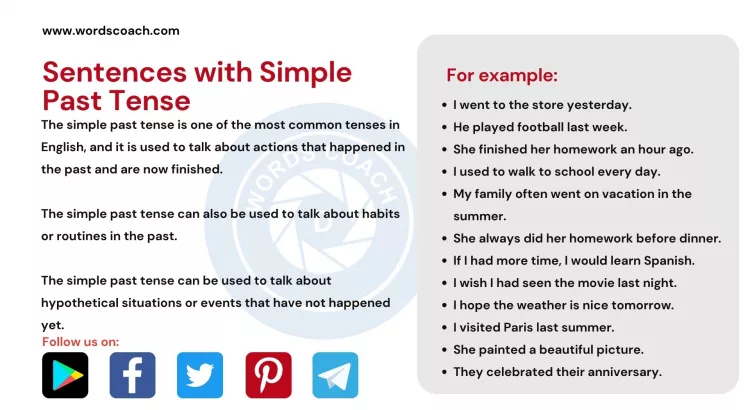
250+ Sentences with Simple Past Tense
Sentences with Simple Past Tense: Master the simple past tense in English with clear examples and explanations. Learn how to use the simple past tense to talk about past events, habits, and routines.
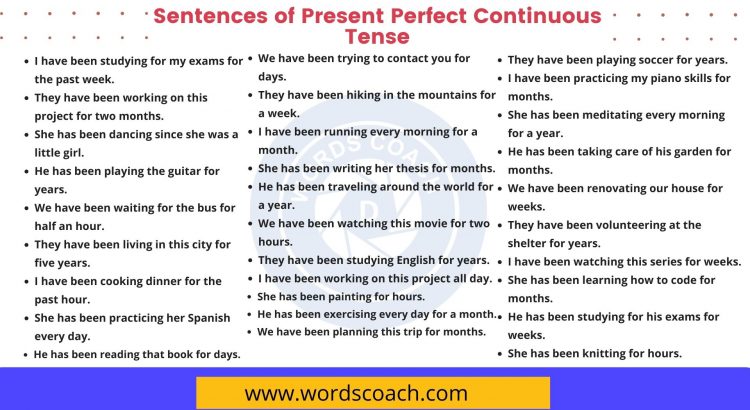
200 Sentences of Present Perfect Continuous Tense, Examples of Present Perfect Continuous Tense
Sentences of Present Perfect Continuous Tense – Learn how to form Present Perfect Continuous Tense sentences with ease by exploring our extensive list of examples and discovering common sentence patterns.
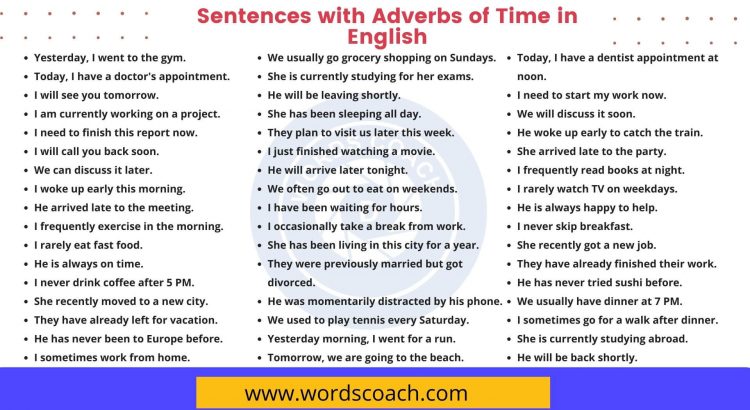
100+ Sentences with Adverbs of Time in English
Here are 110 example sentences with Adverbs of Time in English:
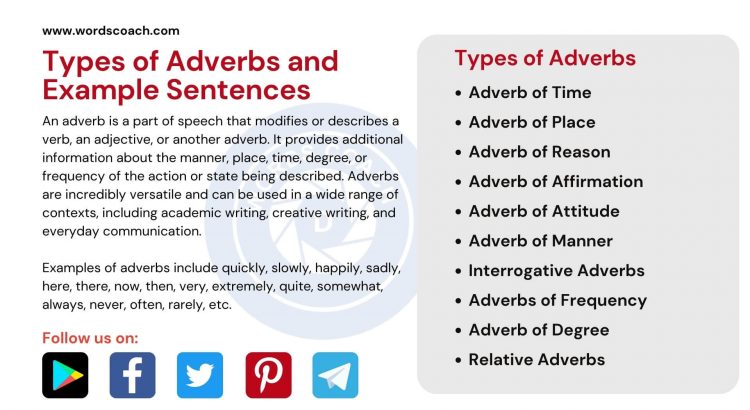
10 Types of Adverbs and Example Sentences
Types of Adverbs and Example Sentences
An adverb is a part of speech that modifies or describes a verb, an adjective, or another adverb. It provides additional information about the manner, place, time, degree, or frequency of the action or state being described. Adverbs are incredibly versatile and can be used in a wide range of contexts, including academic writing, creative writing, and everyday communication.
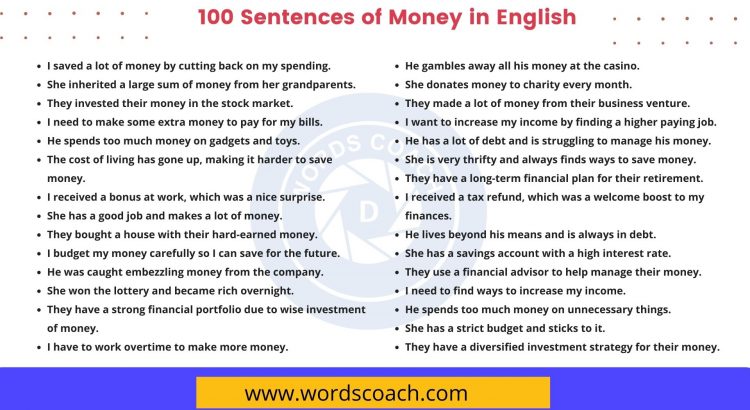
100 Sentences of Money in English
100 Sentences of Money in English
The importance of money in our daily lives cannot be overstated. Money is a medium of exchange that has greatly facilitated trade and commerce throughout history. A comprehensive understanding of money, its uses, and its evolution can be useful in managing one’s own finances and making informed decisions about spending, saving, and investing. Whether it’s setting financial goals, creating a budget, or investing in a retirement plan, the use of money is a fundamental part of our lives and is essential to achieving financial security and independence.
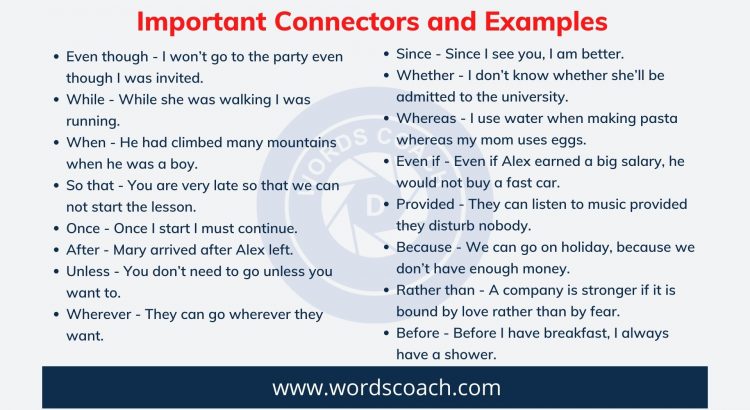
Important Connectors and Examples
A connector is a device that joins two pieces of equipment, wire, or piping together.
Important Connectors and Examples
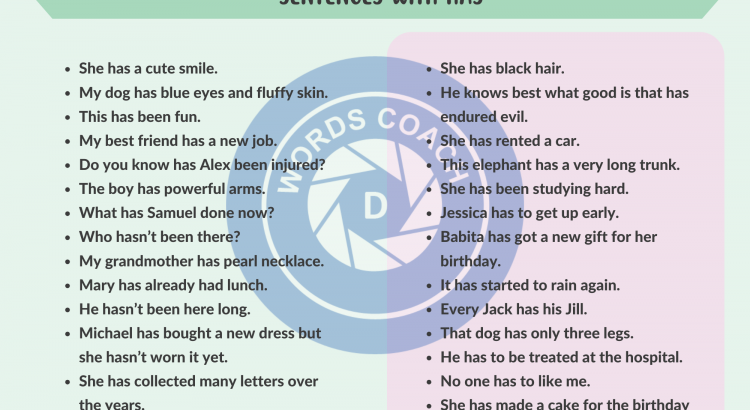
50+ Sentences with HAS
We use ‘has’ to show possession or ownership of singular objects. Has is used with he, she, and it.
50+ Sentences with HAS

200+ Examples Degrees Of Comparison List
Examples Degrees Of Comparison:
Degrees of Comparison are used when we compare a person or thing with another. Degrees of Comparison are applicable only to Adverbs and Adjectives.
Degrees of Comparison add variations to the sentences. A most familiar example of degrees i.e. good < better < best. The degree is increasing from good to best. 200+ Examples Degrees Of Comparison List

50+ Sentences of active and passive voice
50+ Sentences of active and passive voice
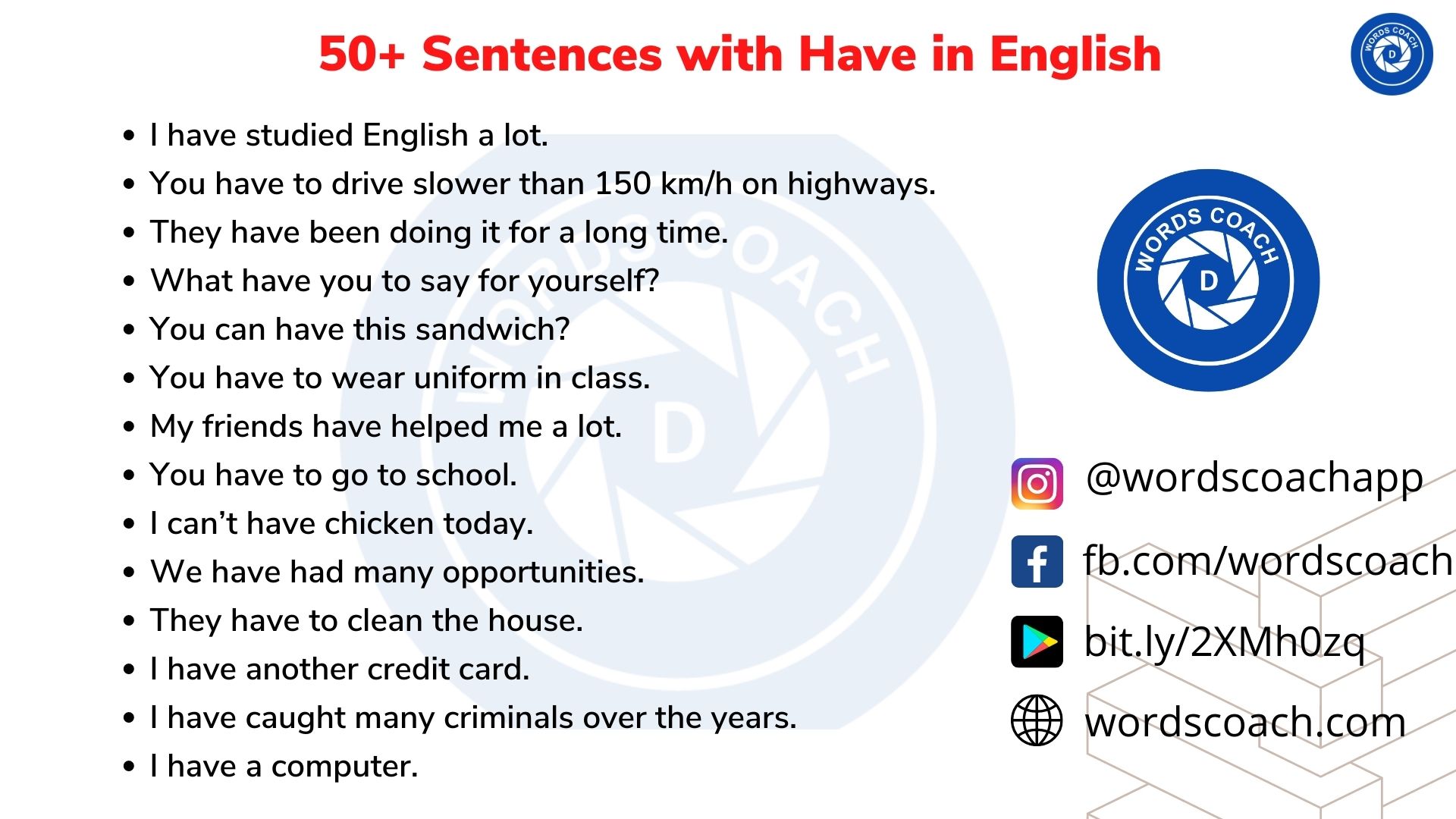
50+ Sentences with Have in English
Sentences with have, Sentences with have in English and make the sentence, Sentences with have in English and Spanish, Sentences with have in English British council
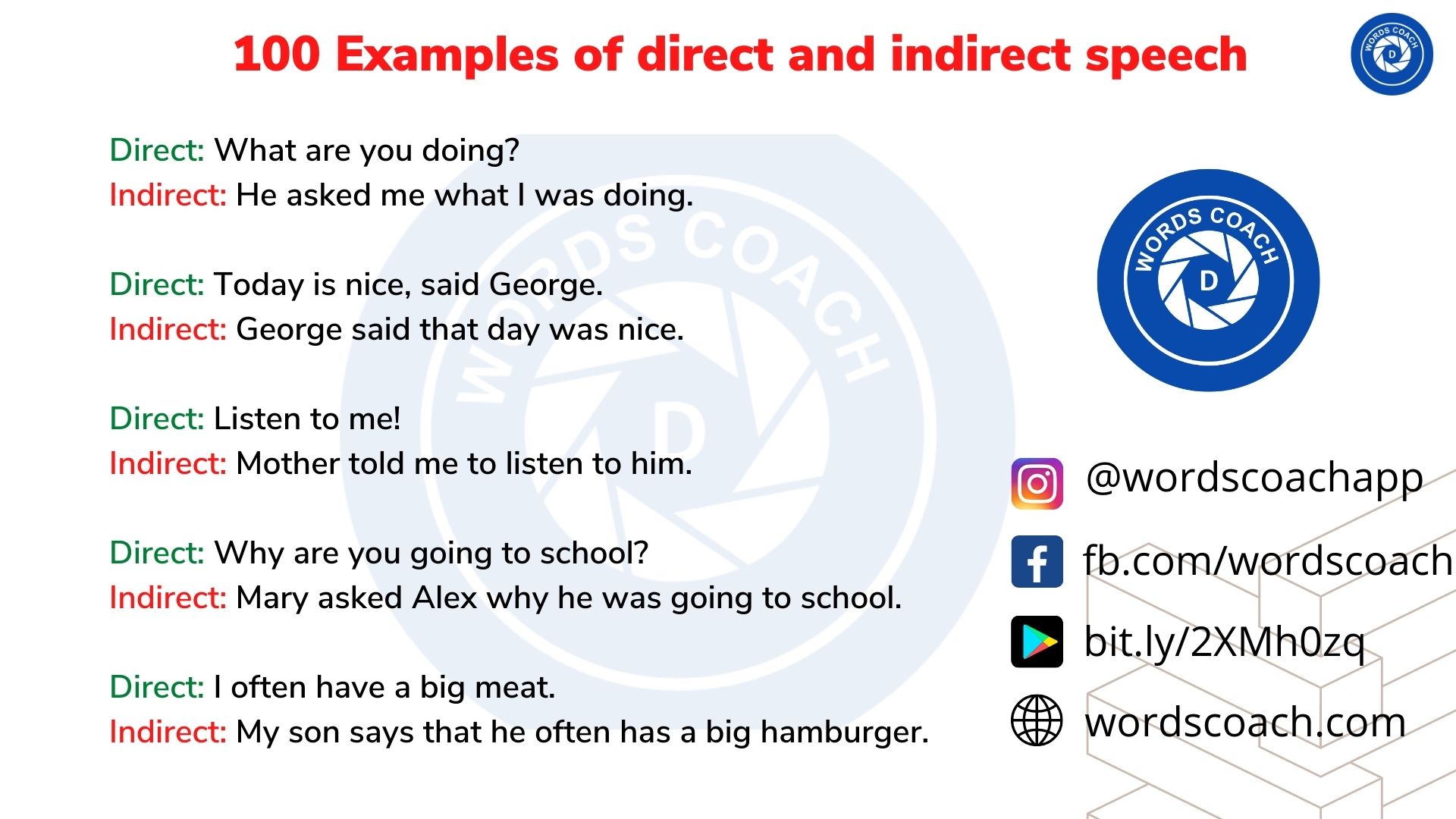
100 Examples of direct and indirect speech
100 examples of assertive sentences in direct and indirect speech, 30 examples of direct and indirect speech assertive sentences, 50 examples of direct and indirect speech exclamatory sentences
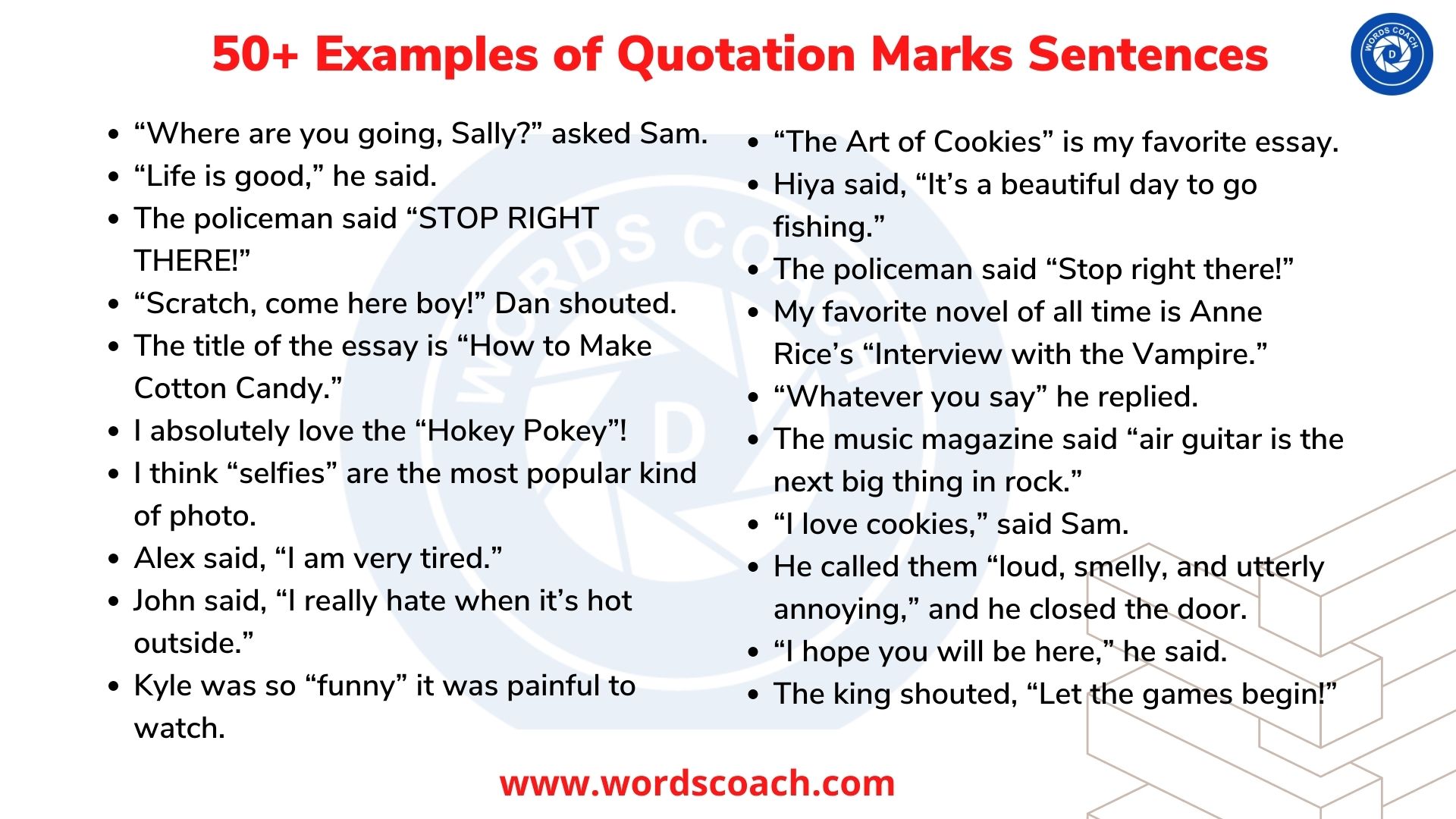
50+ Examples of Quotation Marks Sentences
Quotation marks are punctuation marks used in pairs in various writing systems to set off direct speech, a quotation, or a phrase.
50+ Examples of Quotation Marks Sentences
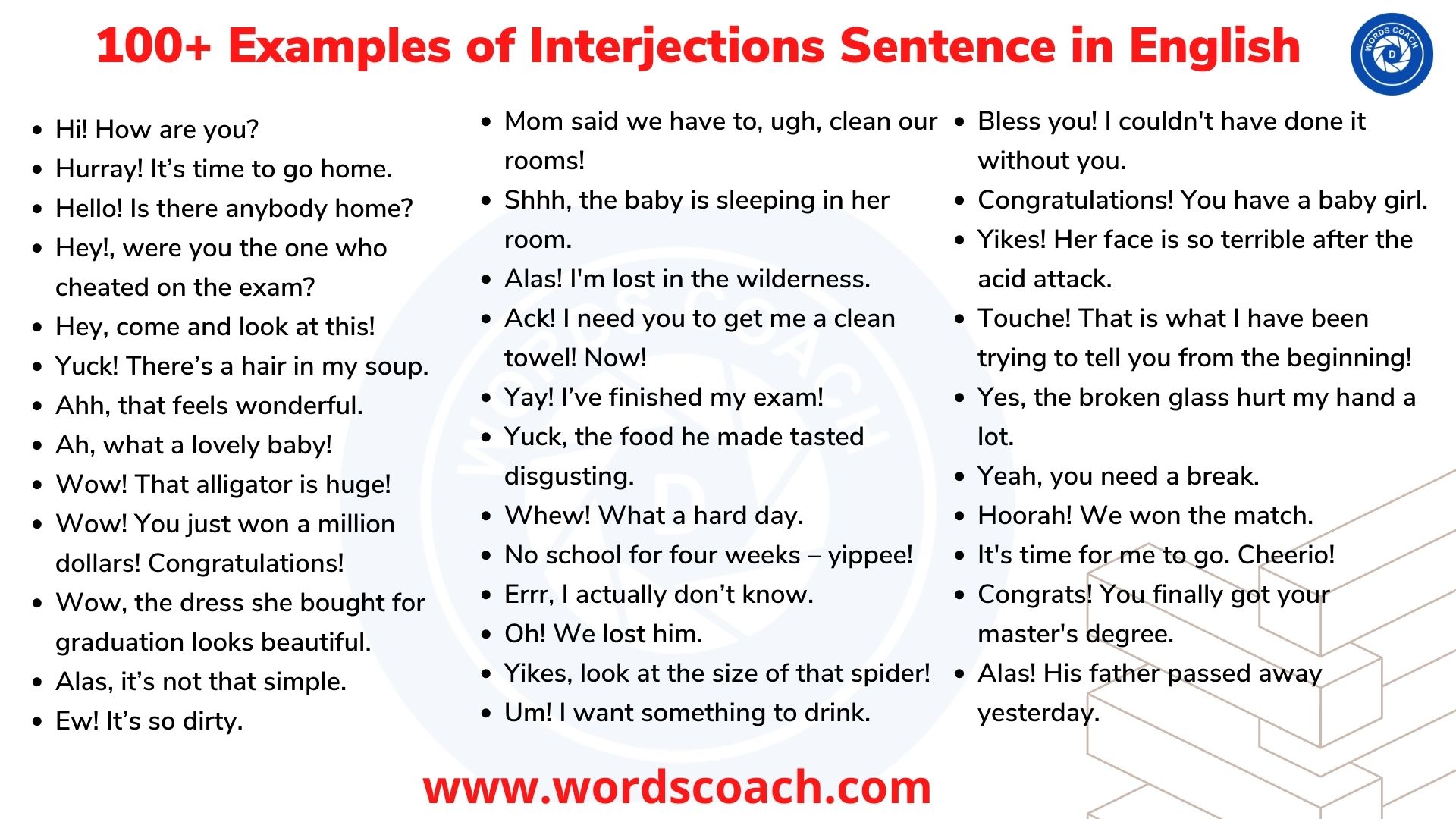
Interjections Sentence: 100+ Examples of Interjections Sentence in English
100+ Examples of Interjections Sentence in English, Example of interjections used in a sentence, Examples of interjections in a sentence
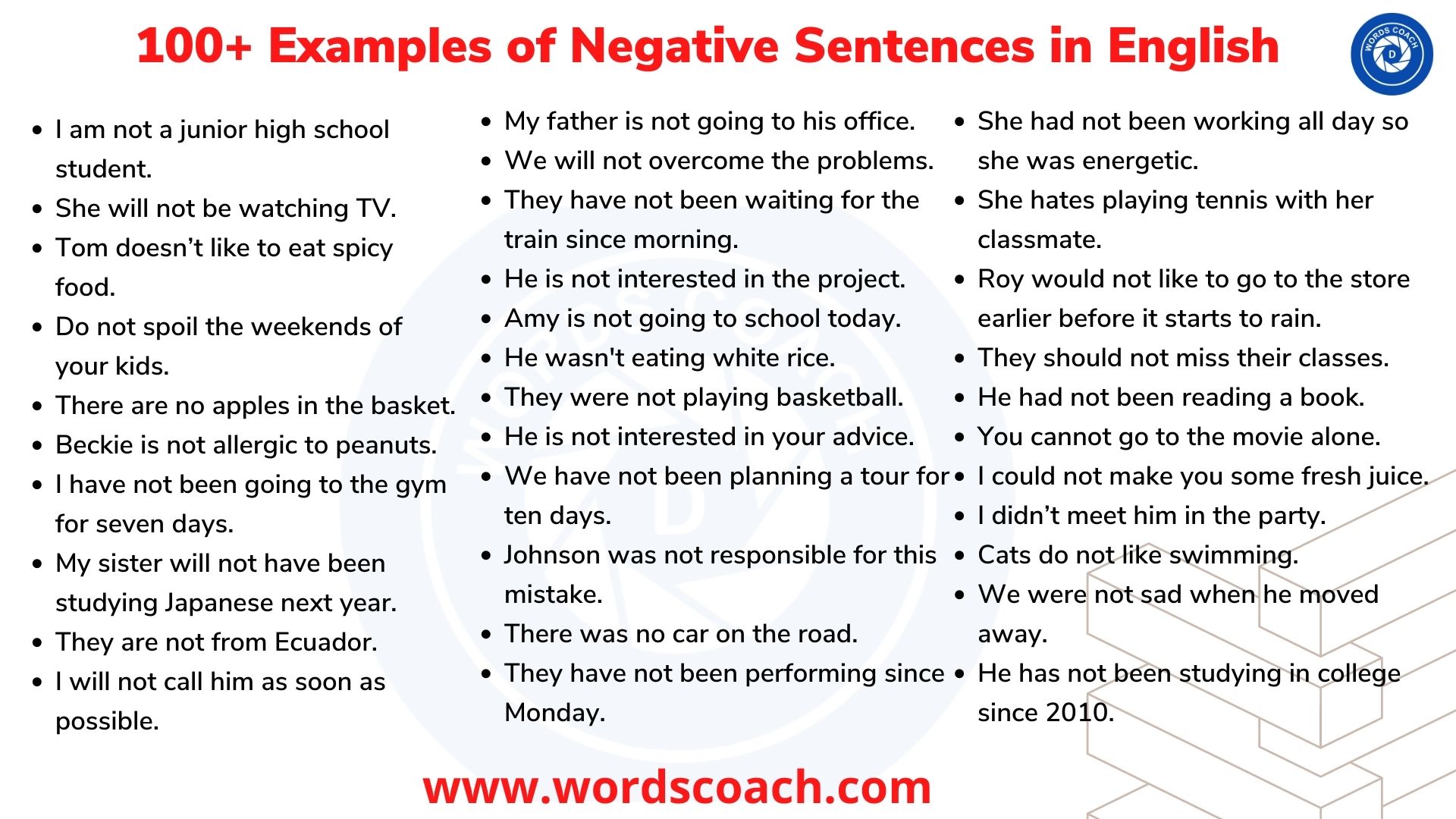
100+ Examples of Negative Sentences in English
What are Negative Sentences? A negative sentence (Examples of Negative Sentences) is the type of sentence that rejects a statement in that sentence itself. Negative sentences are decisive articulations i.e they transfer data accepted to be valid. Examples of Positive Sentences in English 100+ Examples of Negative Sentences in English Here are some common examples […]
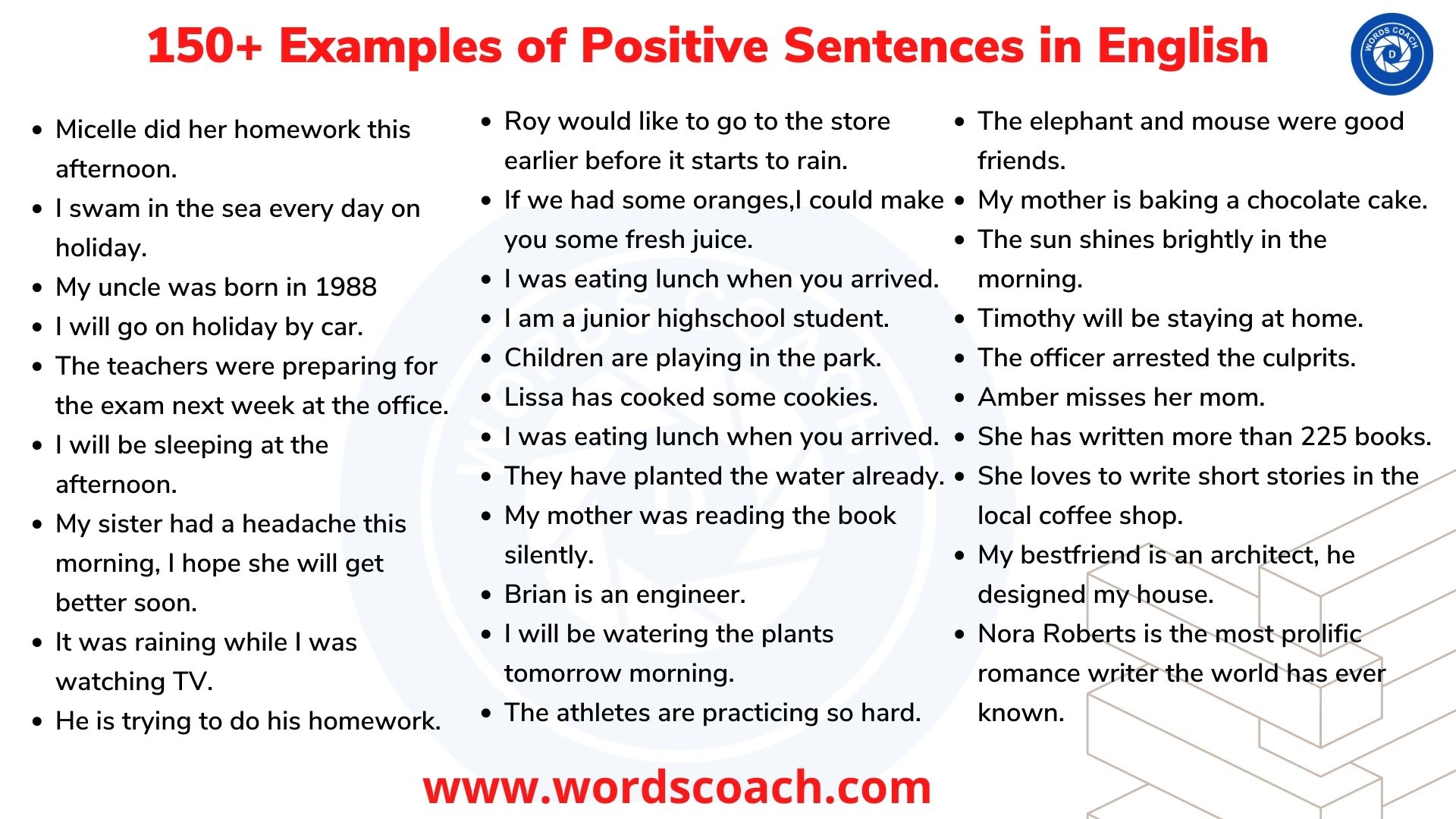
150+ Examples of Positive Sentences in English
150+ Examples of Positive Sentences in English
What are Positive Sentences?
– Positive sentences are those which do not have any negative words like – not, never, etc. Positivity usually means something that is good. However, in English grammar, positive sentences are simply the type of sentences that state something that is factual.

Examples of Future Perfect Continuous Tense
Future Perfect Continuous Tense
Future perfect continuous tense refers to an ongoing action that will take place prior to a certain time in the future. The structure of this tense is will have + been + main verb + ing.
Examples of Future Perfect Continuous Tense
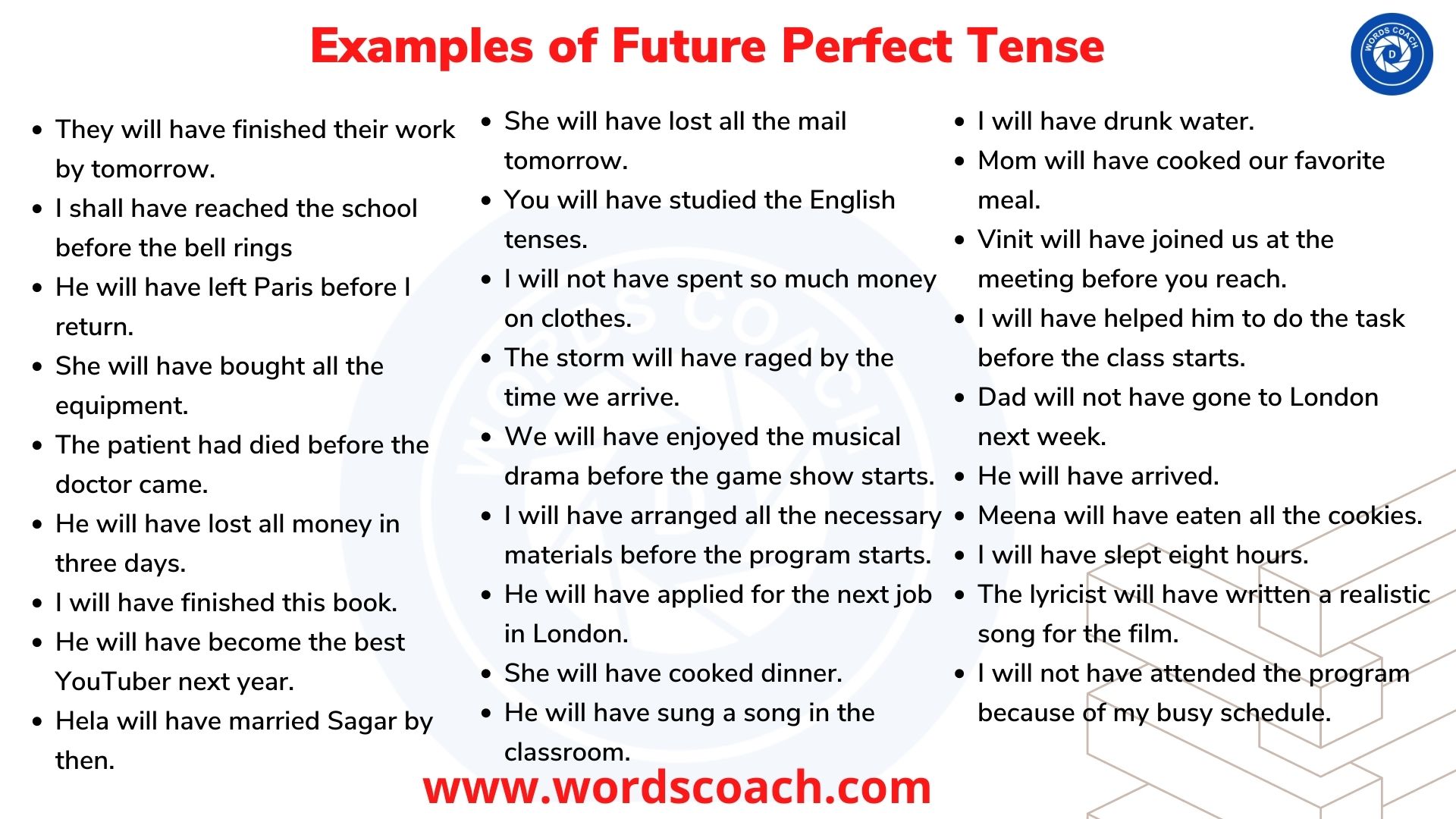
Examples of Future Perfect Tense
Future Perfect Tense
Future perfect tense is used to describe an action that precedes another in the future. The structure of this tense is will/shall + have + main verb + ed or en.
Examples of Future Perfect Tense
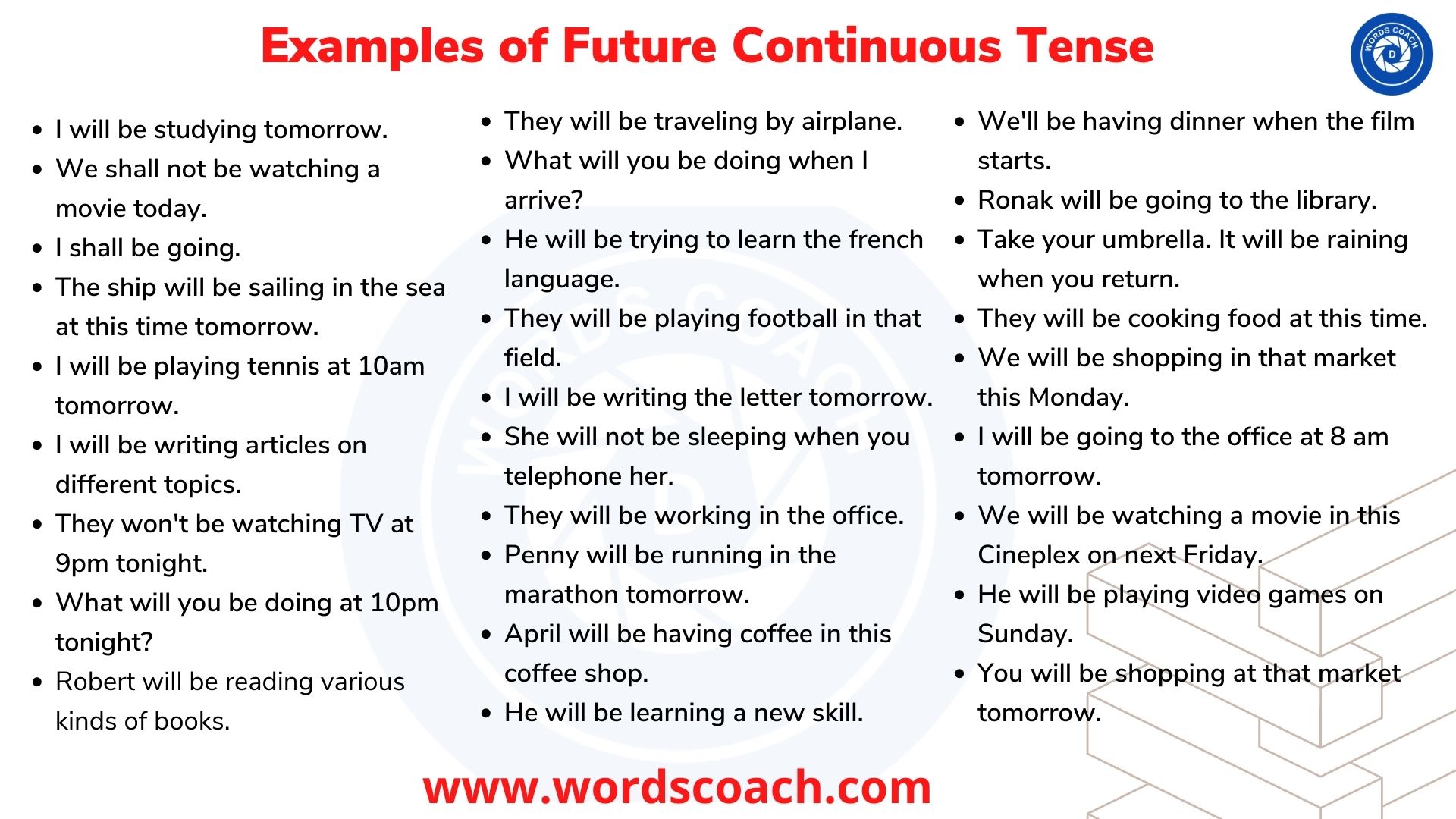
Examples of Future Continuous Tense
Future Continuous Tense
Future continuous tense describes an action that is taking place in the present and will continue taking place in the future also. The structure of this tense is will be/shall be + main verb + ing.
Examples of Future Continuous Tense
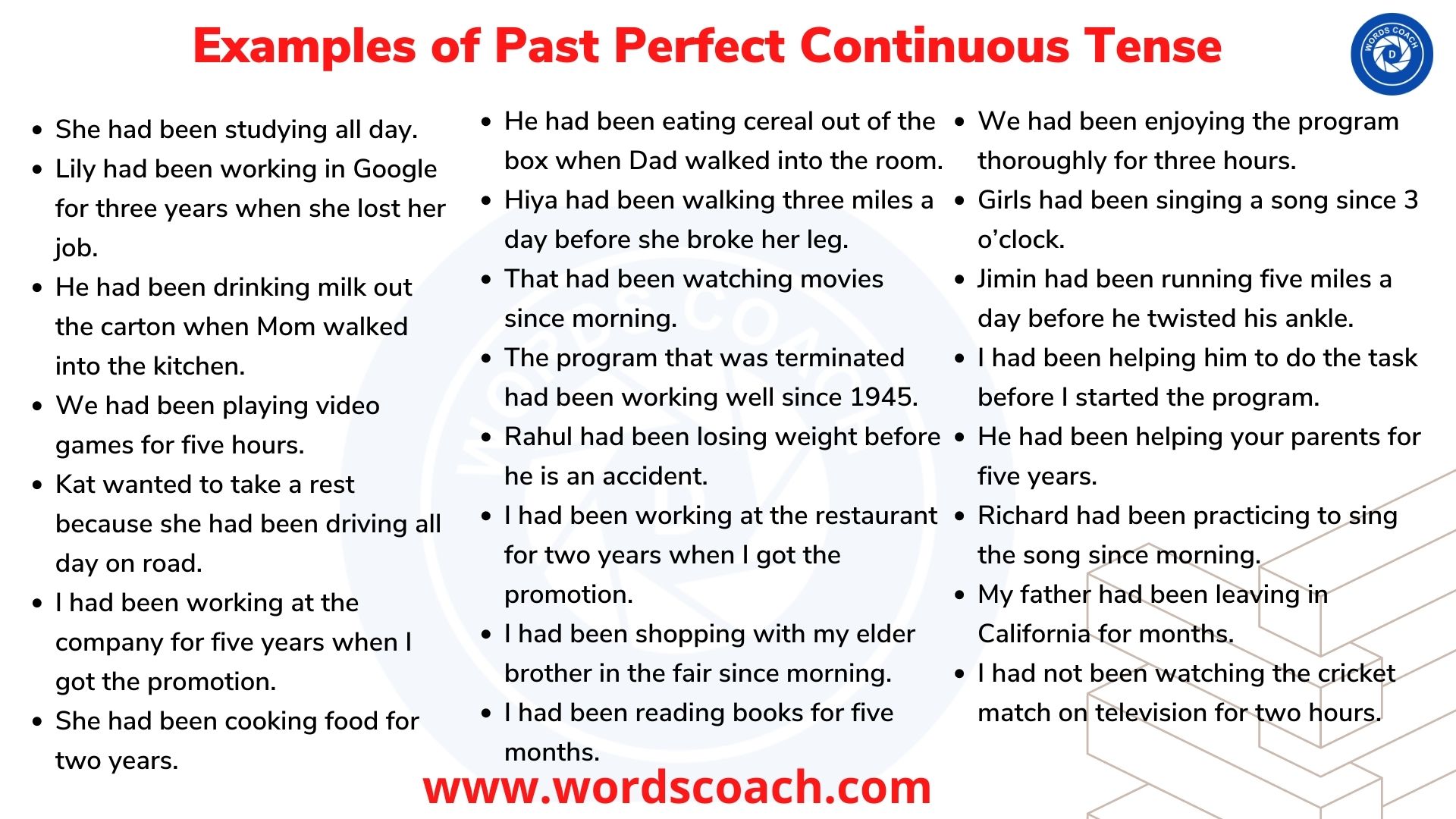
Examples of Past Perfect Continuous Tense
Past Perfect Continuous Tense:
Past perfect continuous tense describes an ongoing action in the past that is completed before another action takes place in the past. The structure of this tense is had + been + main verb + ing.
Examples of Past Perfect Continuous Tense
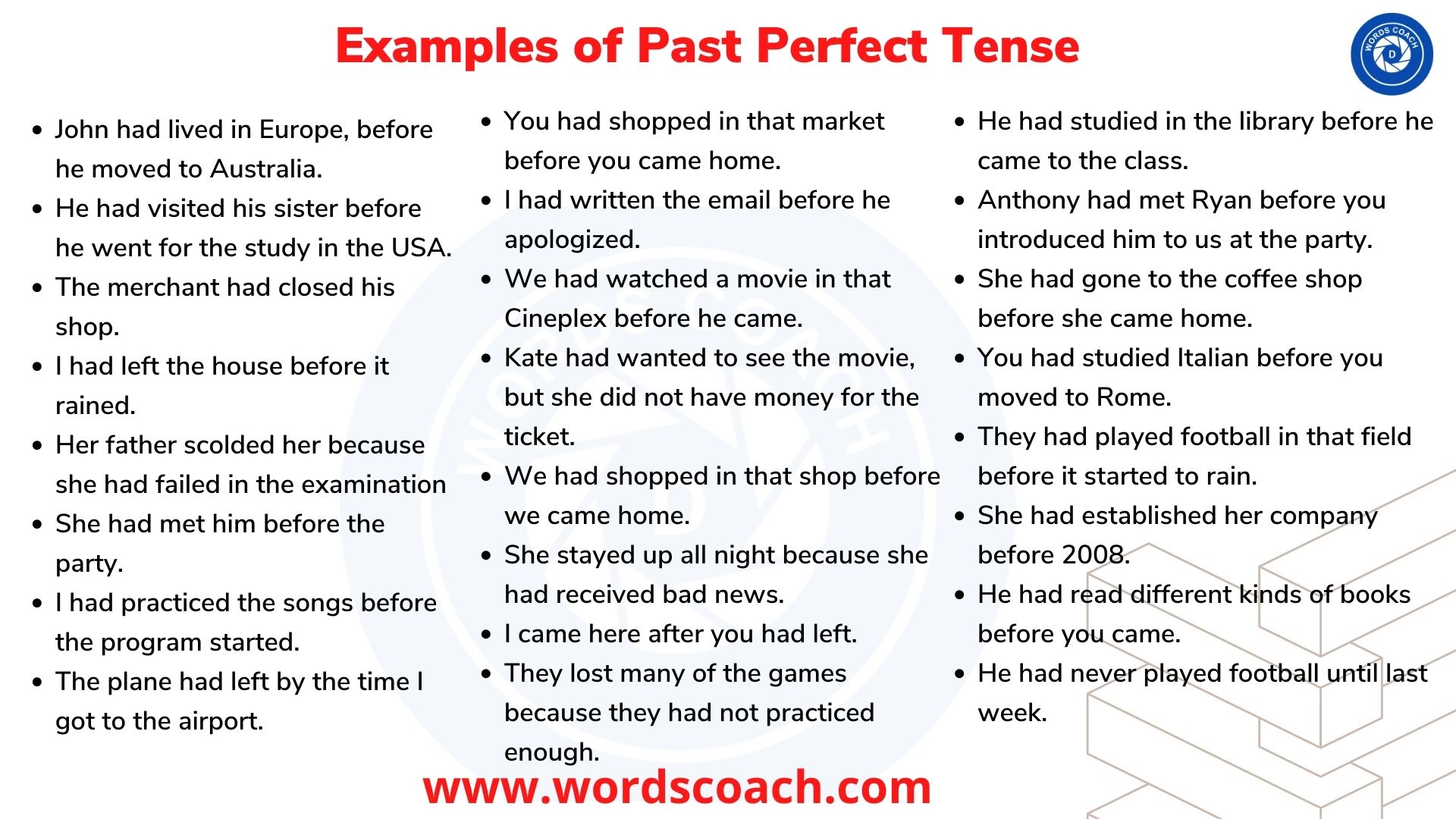
Examples of Past Perfect Tense Sentences
Past Perfect Tense
Past perfect tense refers to an action that leads up to another in the past. The more contemporary past event is expressed in the simple past, and the earlier past event is expressed in the past perfect.
Examples of Past Perfect Tense Sentences
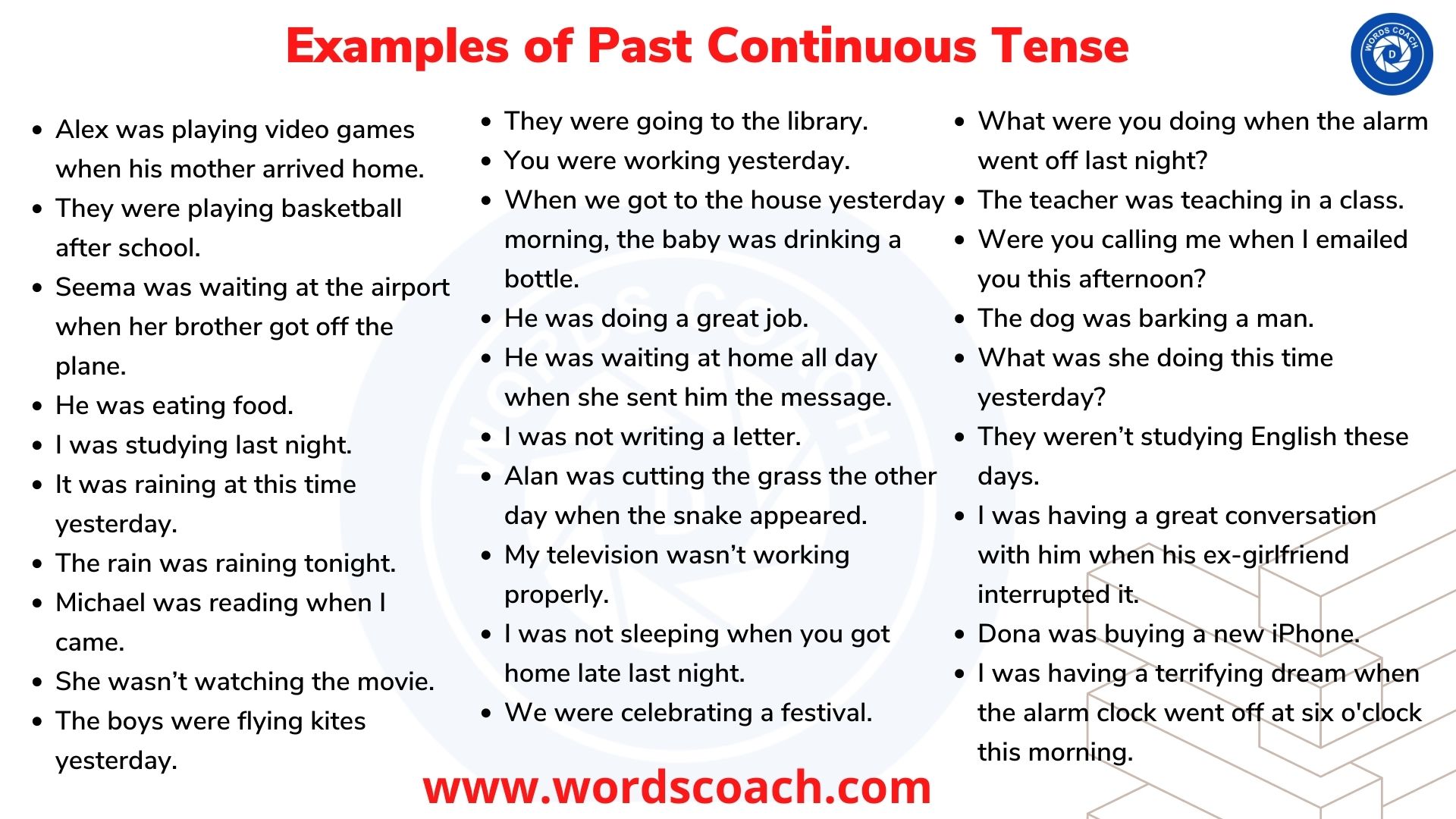
Examples of Past Continuous Tense
Past continuous tense describes in progress action in the past when another past action takes place. The structure of this tense is was/were + main verb + ing.
Examples of Past Continuous Tense

